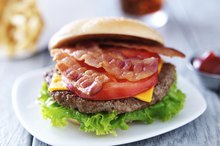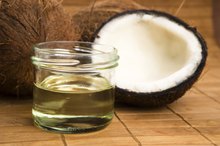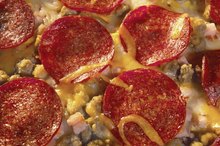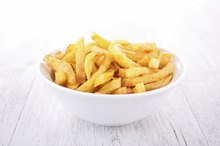What does fact checked mean?
At Healthfully, we strive to deliver objective content that is accurate and up-to-date. Our team periodically reviews articles in order to ensure content quality. The sources cited below consist of evidence from peer-reviewed journals, prominent medical organizations, academic associations, and government data.
The information contained on this site is for informational purposes only, and should not be used as a substitute for the advice of a professional health care provider. Please check with the appropriate physician regarding health questions and concerns. Although we strive to deliver accurate and up-to-date information, no guarantee to that effect is made.
List of Foods That Are High in Lipids
Lipids are organic compounds not soluble in water. They include fats and oils, cholesterol and some other substances. In relation to diet, lipids are thought of as fats that add calories and impact weight and health. Lipids may originate from animals or plants, or be created synthetically. The National Institutes of Health states that some fat is essential for health. (Reference 1, Function)
Oils
Edible oils are lipids. These include vegetable oils such as:
- canola
- cottonseed
- grape seed
- corn
- olive
- peanut
- many others
Vegetable oils usually come from the seeds of the vegetable and most are high in monounsaturated or polyunsaturated fats. Marine oils are also lipids, and include cod liver oil and whale oil.
Dairy Products
What Are the Benefits of Lipids?
Learn More
Cream, milk and butter are lipids. Butter and cream are often used to make food taste better. Milk is considered a healthy beverage and cheese, sour cream and ice cream are dietary favorites. Fat-free dairy products have had most lipids removed.
- Cream, milk and butter are lipids.
Nuts
Nuts and seeds contain excessive lipids but are regarded as health foods because they contain monounsaturated fats. Nuts also provide your body with vitamin E and zinc.
Meats, Poultry and Fish
What Are Visible Fats?
Learn More
Pork, beef, poultry and poultry skins contain large amounts of lipids. The Cleveland Clinic suggests trimming visible fat from meats or purchasing leaner cuts. (See Reference 2) Some fish, such as salmon, mackerel and trout, are high in fats. Fish and fish oils provide omega-3 fatty acids thought to be necessary for heart health.
- Pork, beef, poultry and poultry skins contain large amounts of lipids.
- Fish and fish oils provide omega-3 fatty acids thought to be necessary for heart health.
Vegetables
Some vegetables are high in fat, including olives and avocados. However, they contain monounsaturated fats and are heart healthy.
Sauces
Prepared sauces made with oils or fats contain lipids. Mayonnaise, salad dressings and any sauces made with oils often contain partially hydrogenated fats or trans fats, synthetically created and not good for you.
Packaged and Processed Foods
The University of Pennsylvania lists several packaged foods that contain trans fats and can lead to heart disease 2. (Reference 3, Spreads) Margarine top the list. In order to avoid eating trans fats, you must read labels. Commercially produced and packaged foods often use trans fats since they are cheaper and do not readily spoil. Cake mixes, fast foods, canned soups, frozen casseroles and most baked goods from delis contain trans fats. If you make these foods at home, you will probably use butter or oils. The saturated fats in the butter or polyunsaturated fats in oils are better for you than the commercial trans fats.
- The University of Pennsylvania lists several packaged foods that contain trans fats and can lead to heart disease 2 Margarine top the list.









